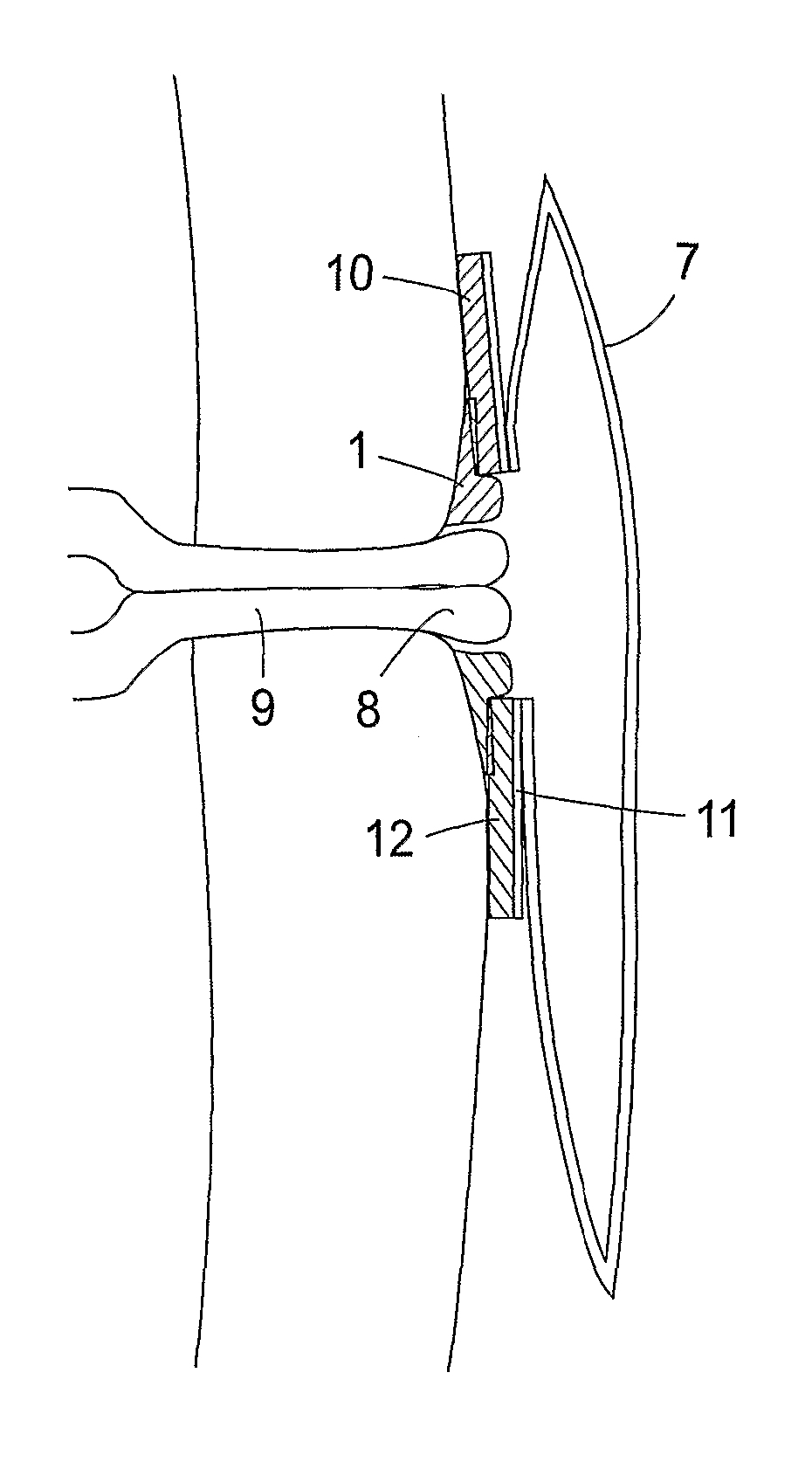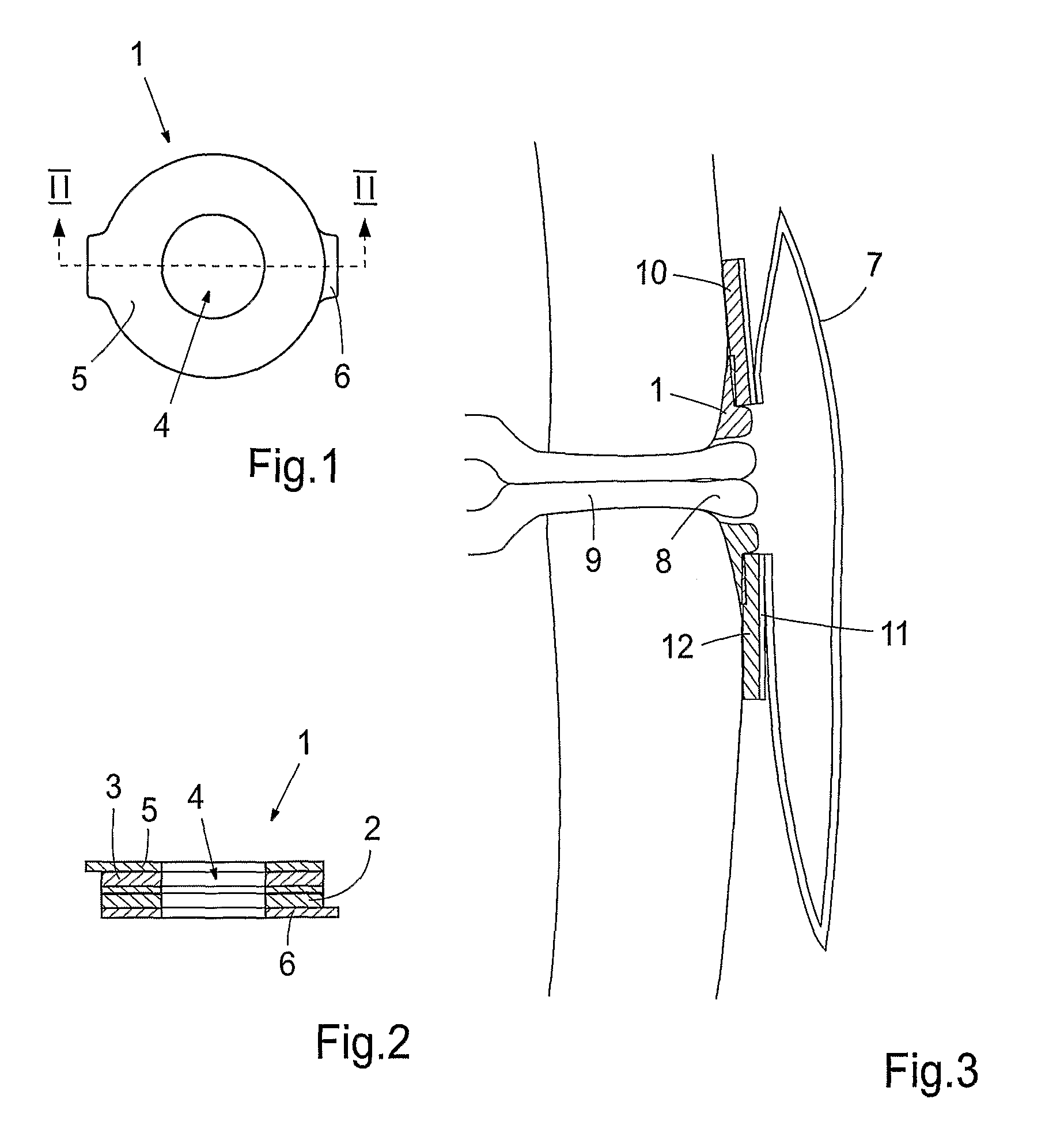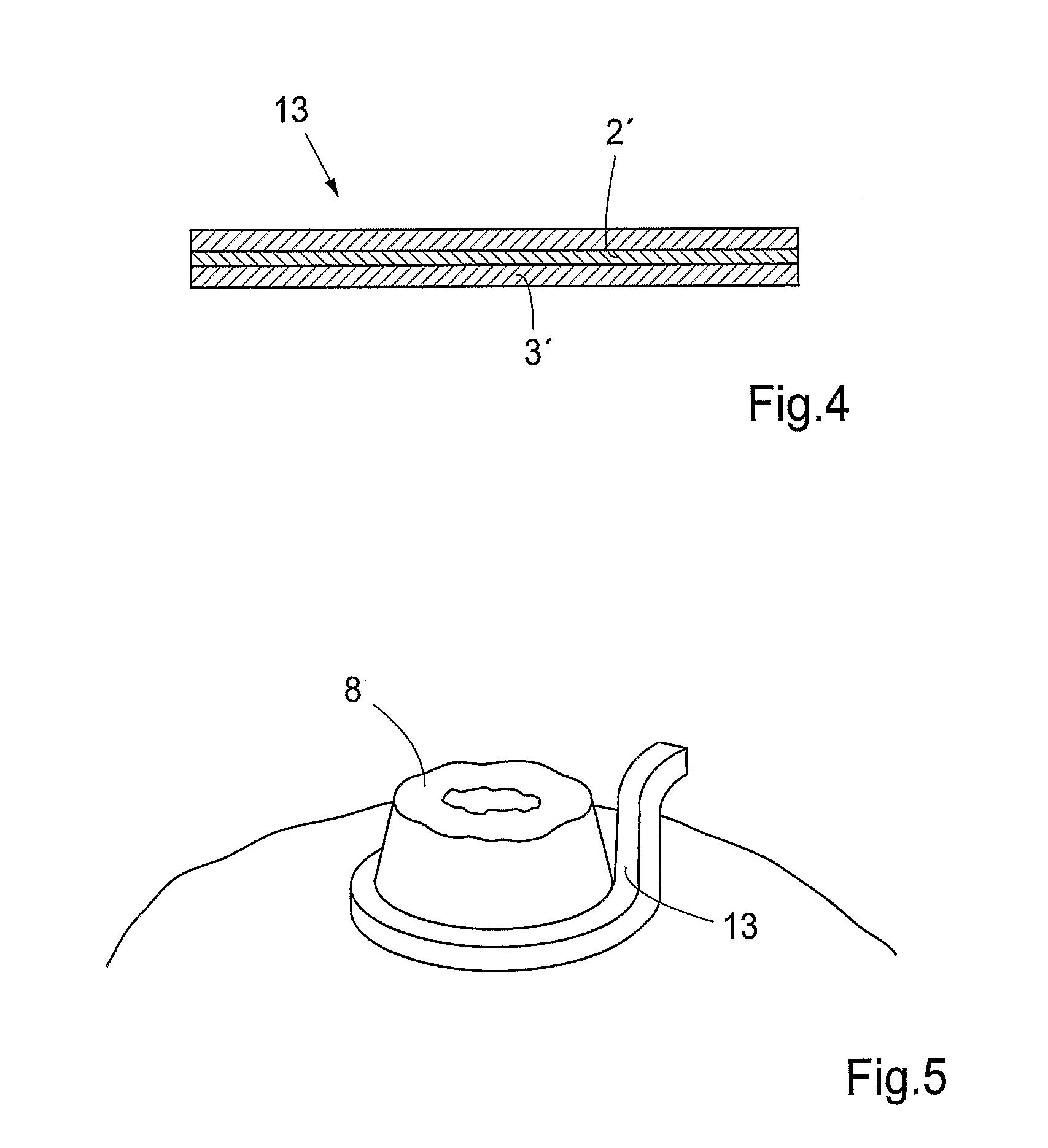Component for Forming a Seal Around an Opening in the Skin
a technology of sealing and skin, applied in the field of components for sealing around openings in the skin, can solve the problems of skin irritation or skin damage in the area, difficult protection of the area, etc., and achieve the effects of reducing the surface area available for reapplication, reducing the risk of shearing, and reducing the risk of skin irritation
- Summary
- Abstract
- Description
- Claims
- Application Information
AI Technical Summary
Benefits of technology
Problems solved by technology
Method used
Image
Examples
Embodiment Construction
[0016]FIGS. 1 and 2 show a first embodiment of a component 1 for forming a seal around a stoma. In the embodiment shown, the component 1 is circular and comprises a carrier 2, for example a net of textile or synthetic fibres, an open-cell polymer foam, for example polyurethane, or a perforated plastic film, enclosed in an adhesive layer 3 of a soft and skin-compatible adhesive, for example a silicone elastomer, which adheres to skin. As will be seen from the figure, the adhesive extends through the meshes or holes in the carrier 2. The carrier material can be made up of fibres of polyamide or polyester or of perforated polyurethane elastomer film. The size of the holes in the carrier can vary to a large extent and it is possible to use thin-woven textiles or even nonwoven material as the carrier, as long as the materials are permeable enough to allow the adhesive to penetrate through the material during manufacture. Knitted textiles can also function as the carrier material.
[0017] ...
PUM
| Property | Measurement | Unit |
|---|---|---|
| thickness | aaaaa | aaaaa |
| thickness | aaaaa | aaaaa |
| thickness | aaaaa | aaaaa |
Abstract
Description
Claims
Application Information
 Login to View More
Login to View More - R&D
- Intellectual Property
- Life Sciences
- Materials
- Tech Scout
- Unparalleled Data Quality
- Higher Quality Content
- 60% Fewer Hallucinations
Browse by: Latest US Patents, China's latest patents, Technical Efficacy Thesaurus, Application Domain, Technology Topic, Popular Technical Reports.
© 2025 PatSnap. All rights reserved.Legal|Privacy policy|Modern Slavery Act Transparency Statement|Sitemap|About US| Contact US: help@patsnap.com



